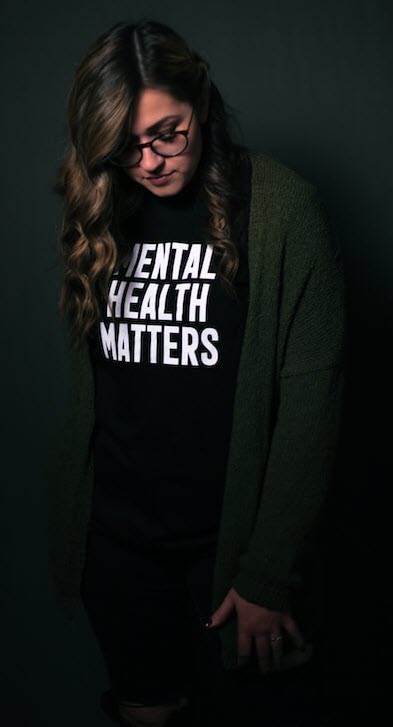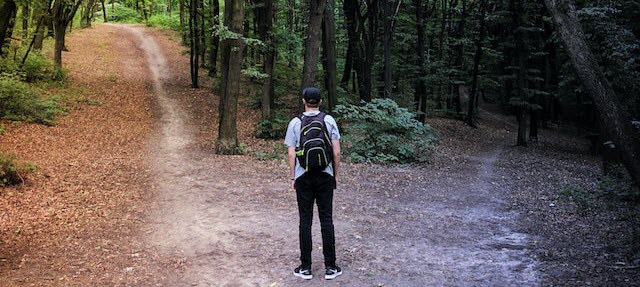Buckeye Arizona Substance Use Treatment
There are a variety of substance abuse treatment choices readily available in Buckeye. Discover the various levels of treatment provided by The Addiction Resource Guide.

Drug abuse treatment programs vary based upon an individual’s needs and the severity of their addiction. Some people might finish treatment on an outpatient basis, while others may require more intensive care, such as residential treatment. A team of addiction professionals can work with a specific to determine which substance abuse treatment program is best for them.
Kinds Of Addiction Treatment Programs in Buckeye AZ
There are several types of Buckeye Arizona addiction treatment programs. Some people may travel through various phases of treatment, whereas others might just need one or two levels of care.
Medical Detox for Drugs and Alcohol
A Buckeye medical detox program is the first step for someone who is beginning treatment for an extreme addiction to compounds like heroin, alcohol or benzodiazepines. In drug or alcohol detox, patients are supervised by skilled health professionals who can keep track of signs and ensure that clients stay safe while withdrawing from drugs or alcohol.

In a medical detox treatment program, personnel can supply medications to relieve the pain of withdrawal as alcohol and drugs are leaving the body. For instance, specialists report that people who are withdrawing from heroin may take lofexidine to alleviate withdrawal symptoms. People may also take buprenorphine or methadone during medical detox. It is very important to remember that medication is only utilized throughout withdrawal when scientifically cleared by a physician.
MAT
Medications can be utilized during the withdrawal process in medical detox, and they can also belong of an ongoing medication-assisted treatment program. Medication-assisted treatment involves using medications in tandem with therapy throughout the recovery process.
Medication-assisted treatment is typically utilized to treat dependencies to illicit opioids, prescription opioids and alcohol. Medications can help manage cravings and support both brain chemistry and bodily functioning. According to research, medication-assisted treatment can help people remain in treatment, lower opiate abuse, increase survival rates and decrease criminal activity. Just like with medical detox, methadone treatment and buprenorphine are typically recommended in medication-assisted treatments for opioid addiction. Disulfiram and acamprosate may be used for the treatment of alcohol abuse.
Related: Find Addiction Treatment Centers in cheyenne wyoming
Inpatient Treatment for Buckeye Residents
Buckeye Inpatient drug rehab is typically provided in a hospital or a clinic that focuses on inpatient treatment. In this type of treatment setting, physician supervise clients and have 24-hour access to nurses. People participating in inpatient treatment typically receive medications and therapy services and take part in group therapy.

Inpatient treatment typically includes ongoing evaluation of the addiction and monitoring of goals. Once a client has completed inpatient treatment, personnel produce a discharge strategy and the patient is relocated to another treatment setting, such as ongoing outpatient therapy.
Buckeye Arizona Residential Rehab
Residential rehab is similar to inpatient treatment however is normally longer-lasting. According to the National Institute on Substance Abuse (NIDA), residential services typically happen outside of a medical facility setting, indicating residential facilities offer more of a home-like environment. People receiving residential care live at the treatment facility on a full-time basis.
Stays in residential rehab can last for a few weeks or a number of months, with the goal of helping people develop healthy social abilities and change useless behaviors. Nevertheless, the length of treatment is extensive and can vary widely depending on both the program and the individual’s needs.
PHP Treatment
A partial hospitalization program provides an alternative to inpatient or residential treatment. According to The Association for Ambulatory Behavioral Health care, these programs are used either in medical facilities or freestanding clinics and offer intensive services. People who participate in a partial hospitalization program may get treatment during days, evenings, or weekends, and they return house at night. If an encouraging home environment isn’t offered, customers may live in a sober living facility.
Partial hospitalization works for patients who are not a risk to themselves however still require intensive treatment. In these programs, people spend more time in treatment than those in conventional outpatient programs, but they might have the ability to live in your home and get treatment through the Nobu teletherapy app.
Intensive Outpatient Programs
Intensive outpatient treatment involves group treatment sessions along with private counseling. People who are taken part in intensive outpatient treatment might also take medications and get medication management services. Depending on the program, customers might live off-site at home or in sober living housing. Online counseling is also common for this level of care.
Intensive outpatient programs are an alternative to hospitalization or inpatient programs. Sometimes, people will begin an intensive outpatient program after transitioning out of an inpatient setting. According to research, intensive outpatient programs offer at least 9 hours of service weekly, but some programs might be more intensive.
Outpatient Rehab
Outpatient rehab is a step down from intensive outpatient treatment. Per the American Society of Addiction Medicine, someone in outpatient treatment gets less than 9 hours of services weekly.
Similar to intensive outpatient programs, outpatient rehab normally involves private and group therapy in addition to access to medication and medical services. In outpatient programs, people set up visits at times that fit their schedules, and they can continue to operate in the neighborhood and live at home throughout treatment. Outpatient programs provide versatility, which is a benefit of this type of treatment.
Dual Diagnosis Treatment

Dual diagnosis treatment is supplied to individuals who have both an addiction and a mental health condition. For example, a person who deals with opioid addiction and bipolar disorder would be a prospect for dual diagnosis treatment.
With this form of treatment, people get integrated services that deal with both addiction and mental health conditions. People in dual diagnosis services get therapy, helpful services and medications. Treatment strategies must think about both the mental health condition and the addiction to be efficient. For example, if an individual receives treatment for addiction, however underlying anxiety is not dealt with, the individual may regression to substance abuse as a form of self-medication.
Court-Ordered Rehab
Court-ordered treatment is provided as a legal effect for drug-related offenses, and comes with consequences for noncompliance. Studies reveal that court-ordered treatment is just as reliable, if not more so than voluntary addiction treatment. might take lots of kinds and frequently is carried out in the same setting as voluntary treatment. The particular requirements of treatment differ with each distinct court sentence. In some cases, treatment may be provided as an option to incarceration or as a method to minimize the length of incarceration or probation.
Depending upon the level of offense, kinds of court-ordered treatment include educations programs, group therapy, outpatient programs, community-based programs and residential programs.
Faith-Based Treatment
Some treatment centers approach addiction recovery through the lens of spirituality. The most widely known neighborhood support group, Alcoholics Anonymous (AA), was founded on strong religious principles and continues to promote faith-based recovery to its 2 million members around the globe.

If you believe that spiritual principles might benefit your recovery, you can quickly find treatment programs that carry out these concepts alongside conventional medicine. Research study shows that recovering patients with higher levels of spirituality display favorable qualities such as increased optimism, lower anxiety and higher durability to tension. By assisting a person in recovery find inner strength, faith-based rehab centers want to fortify their course to sobriety.
Buckeye Aftercare Programs
Aftercare includes services that people take part in to preserve lasting sobriety after completing a treatment program. Aftercare services may involve ongoing counseling, involvement in support system, or linkage to case management or peer support services. Aftercare plays an essential role in preventing regression. According to research, aftercare is more efficient when people participate in it for longer time periods.
Related: Find Addiction Treatment Centers in plymouth minnesota
Short-Term vs Long-Term Addiction Treatment in Buckeye

Short-term treatment generally lasts around thirty days, but treatment of this length may not constantly work. NIDA reports that short-term residential programs are generally intensive, and it is necessary for people to transition into an outpatient program after completing one.
Long-term treatment usually lasts someplace between three and 12 months. Long-term residential treatment happens in a home-like setting, and people have access to treatment 24 hr a day. A common design for long-term treatment is the therapeutic neighborhood, and people in this type of program generally remain in treatment for six to 12 months. Long-lasting treatment typically begins with detox from drugs, and after that an individual transitions into the program, which is at first rigorous and follows a structured schedule with stiff guidelines. As people make development in treatment, they are awarded more flexibility.
The Addiction Treatment Procedure in Buckeye AZ
Addiction treatment is a process that generally takes place in phases. For instance, the treatment process for addiction generally starts with a consumption appointment and continues from there.
The following are typical actions in an addiction treatment program:
- Intake: The intake process includes an addiction professional gathering info to admit you into a treatment program. For example, the specialist will discuss your health history and likely carry out a standard medical examination. Standard details, such as date of birth, earnings, family background and employment history will likewise be gathered during the intake process.
- Screening & Evaluation: During the screening and assessment phase of treatment, a specialist will utilize a tool such as the Drug Abuse Screening Test (DAST) to figure out the extent of a person’s issues with drug abuse. These tools include a short interview and efficiently supply the treatment group with info about an individual’s substance use. Using screening and assessment results, the expert group can determine what further assessments are needed.
- Evaluation: After the screening and assessment are finished, a complete drug abuse evaluation will be completed. This evaluation will be more comprehensive. Throughout this assessment, a clinician will gather details about your history of substance abuse, consisting of when you initially started using, what substances you have utilized and how frequently and in what amounts you have actually utilized. The clinician will likewise go over signs of your drug abuse, such as whether you experience withdrawal, what physical effects you have actually experienced as an outcome of drug abuse and whether you have actually experienced legal difficulties or problems at work or home due to drugs. A clinician might use an evaluation tool such as the Addiction Intensity Index (ASI) to gather extensive information about your substance usage and its repercussions.
- Establishing a Treatment Strategy: After a full assessment is finished, a clinician will work with you to establish a treatment strategy. Addiction treatment plans address locations of need, such as avoiding drugs and acquiring employment, as well as what services or resources will be utilized to address these locations. A treatment strategy likewise mentions long-term goals and shorter-term goals. Professionals report that treatment strategies must also make use of a customer’s strengths.
How to Discover a Drug or Alcohol Treatment Center Near Buckeye
If you are ready to enter treatment, the Substance Abuse and Mental Health Services Administration uses a drug abuse treatment locator. With this simple tool, you can enter your postal code and discover drug and alcohol treatment services located near you. The Addiction Resource Guide also offers local rehab resources and has full-service treatment centers located throughout the United States
If you or a loved one is looking for addiction treatment, The Addiction Resource Guide has treatment centers located throughout the nation and can create a drug abuse treatment plan that satisfies your special requirements. Reach out to our caring admissions department today to discuss your needs and begin the journey toward recovery.
980 S Watson Rd Bldg 34
Buckeye, AZ 85326
(866) 932-5985
